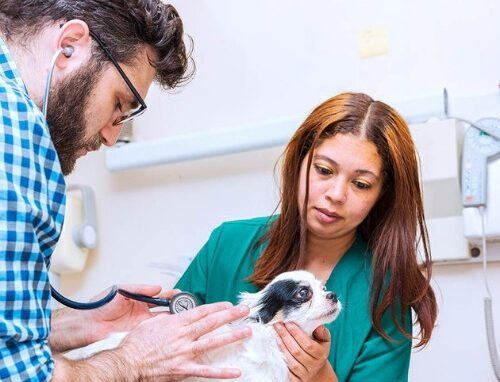
Pet Physical Examinations in Forest Hills, NY
Ensuring your pet’s health starts with regular pet physical examinations in Forest Hills, NY. At Austin Veterinary Care, we understand that these exams are vital for maintaining your pet’s well-being. Comprehensive physical examinations allow for early detection of health issues, ensuring your pet receives the best possible care.
Call us today at 718-480-6100
The Importance of Physical Examinations
A thorough physical examination is essential to preventive healthcare for your pet. Regular check-ups help identify potential health concerns before they escalate into more serious conditions. Our skilled veterinarians will assess your pet’s health during these examinations to determine their overall condition. These assessments focus on detecting illnesses and provide an opportunity to discuss your pet’s behavior, diet, and lifestyle. Engaging with pet owners allows us to offer personalized advice and recommendations, enhancing our overall care.
What to Expect During a Physical Examination
A complete physical examination proceeds methodically to ensure nothing is overlooked. Here’s how the process typically unfolds:
Oral Examination
The examination begins with a close look at your pet’s mouth, focusing on the teeth, gums, and tongue. We check for signs of dental disease, a common issue in pets. Healthy gums and teeth are crucial for your pet’s overall health.
Nose and Eyes Assessment
Next, we examine the nose for swelling or discharge and assess the eyes for inflammation or redness. Symmetry is crucial; therefore, both eyes are compared carefully. If there are any concerns about your pet’s vision, a more detailed examination of the retina may be conducted using an ophthalmoscope.
Ear Examination
Using an otoscope, we inspect both the outer ear and ear canal. This helps us identify skin issues, ear mites, yeast infections, or abnormal growths that could affect your pet’s comfort and health.
Lymph and Thyroid Gland Check
We then examine the lymph glands in your pet’s neck for any signs of swelling or pain. The thyroid glands are also assessed for abnormalities, which could indicate potential health issues.
Abdominal Palpation
The next step involves abdominal palpation, where we gently use our hands to feel the organs within your pet’s abdomen. This technique provides valuable insights into their internal health.
Skin and Coat Inspection
The skin and coat are also thoroughly examined, particularly around sensitive areas like the perineum, face, and underbelly. Any signs of irritation, redness, or hair loss will be noted.
Heart and Lung Evaluation
A stethoscope is used to assess your pet’s heart and lungs. We listen for the heart rate, rhythm, and any abnormal sounds. Similarly, we evaluate the lungs to check for any breathing difficulties. Although pets cannot follow commands like humans, quiet observation during this assessment is vital for accurate results.
Weight and Vital Signs
Your pet’s weight is recorded, and if there are signs of illness—such as lethargy, weight loss, or vomiting—we may take their temperature and check for dehydration. These indicators help us gauge their overall health status.
For more information about our physical examination services or to schedule an appointment, please contact us today. Your pet’s health is our priority, and we’re here to help!
Key Benefits of Pet Physical Examinations
Early Detection
Identifying health issues early allows for timely intervention and treatment.
Preventive Care
Routine exams help prevent illnesses before they develop, ensuring your pet remains healthy.
Customized Health Plans
Each examination allows you to adjust your pet’s health and wellness plan based on their needs.
Monitoring Progress
Regular check-ups allow for tracking any changes in your pet’s health over time.
Enhanced Quality of Life
Proactive care contributes to your pet’s happier, healthier life, minimizing discomfort and distress.
At Austin Veterinary Care, our dedicated team is committed to providing exceptional care through comprehensive pet physical examinations in Forest Hills, NY. We invite you to schedule your pet’s next check-up to help ensure a long and healthy life. Contact us today to make an appointment!
Get Care
© 2025 Austin Veterinary Care | Privacy Policy



